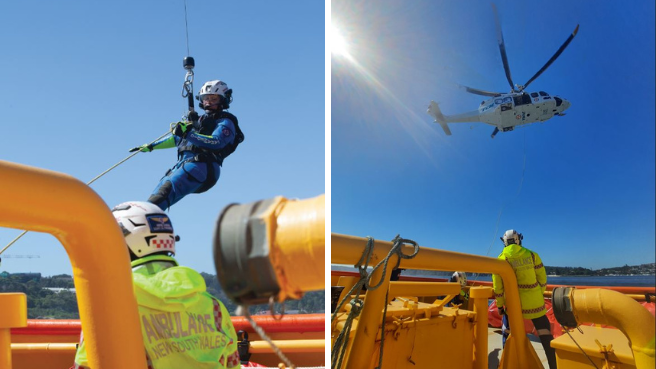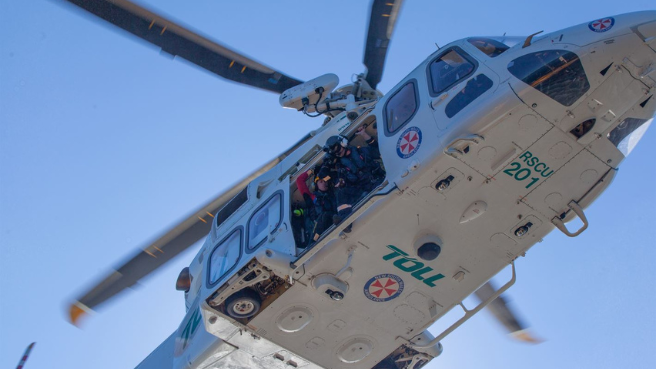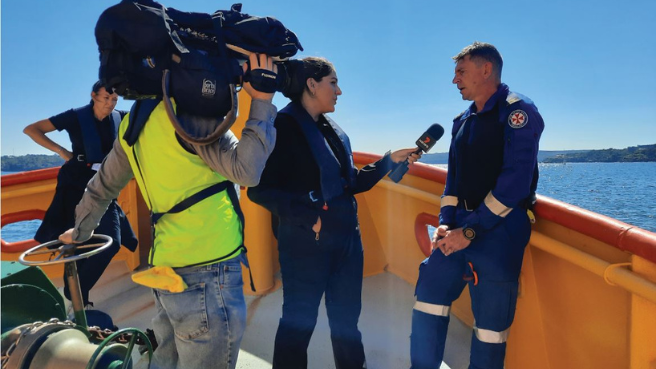
NSW Ambulance Rescue Helicopter crews have taken part in a training exercise which – for good reason – is best described as one that featured a lot of moving parts.
Over the course of 12 weeks, helicopter crews (including pilots, air crewmen and Critical Care Paramedics) took part in these training events, which were held on Sydney Harbour.

The task involved a CCP (Critical Care Paramedic) being winched down onto a moving vessel to retrieve a patient who had to be stretchered out of the vessel and airlifted to safety.
The task was made particularly challenging given the helicopter had to maintain the same speed as the boat while a CCP was winched aboard. For safety reasons, the ocean was relatively calm and flat during each of the exercises – something that unfortunately isn’t always the case in real-life, with swell movement sometimes proving unpredictable and particularly hazardous.
“Sea conditions can make a vessel move in a different way each time and because of this there’s no standard way to guarantee CCPs always hit the deck nice and clean,” Aeromedical Operations’ Education and Training Manager Paul Kernick said.
“This training exercise includes a decisionmaking pathway, which first of all involves an assessment from the air to see if the conditions are suitable to go on the vessel.
“The pilot has a look at the vessel and gets a feel for the helicopter matching the speed of the vessel, as well as understanding what the vessel is doing. The air crewman – who is the winch operator – and the paramedics on board the helicopter, get to assess the deck and also see what it’s doing. They (the helicopter crew) might then direct the vessel to move left or right to see if it leads to a more steady movement on the deck.

“While they are doing that they are also assessing for loose objects on the deck that may be a risk of hitting the aircraft or personnel.” Vessel size also plays a role during these types of rescues.
“We don’t generally bring people off smaller vessels by air because it’s quite risky,” Paul said.
“But in this case it was a vessel that was big enough to do so.
“It was also identified in this exercise that the patient was potentially not going to survive the journey (using the vessel) back to land, so it was considered an urgent transport to get that patient back to a trauma centre.”
The training was made possible through Aeromedical Operations collaborating with the Aeromedical Crewing Excellence (ACE) Training Centre; and the Port Authority of NSW, who supplied the vehicle.
Paul said staff gave “very positive” feedback to the exercise, which also featured on 7 News.
